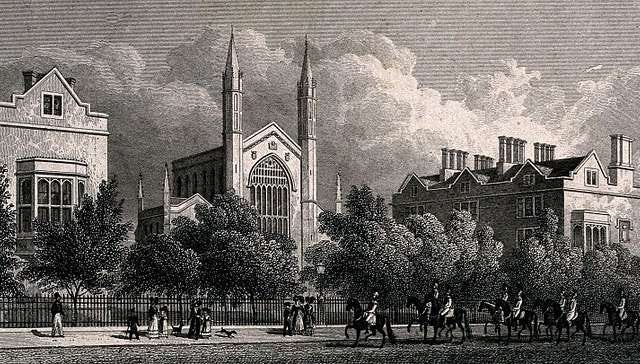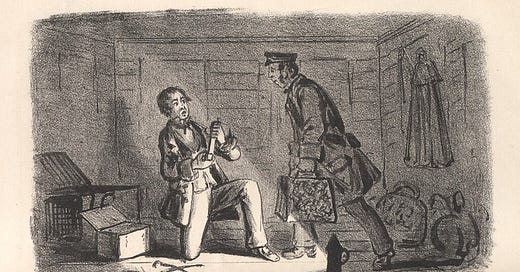Hi and welcome to your weekend newsletter…

This edition’s a handful of London’s great historic heists.
First, a policy statement: the word heist gets thrown around a lot, and a disappointing amount of the time it’s affixed to a high-stakes but otherwise extremely average theft — an armed hold-up of a bank isn’t a heist, no matter how much cash you leave with, it’s just a scaled-up mugging. Is it too much to ask that we all get a bit more grandiose with our expectations of what a heist should be?
The plan should be improbably complicated. There should probably be a fake beard or some sort of washerwoman disguise involved. Ideally also a guard you have to seduce or an embassy you have to gatecrash or a building you have to abseil into.
With that in mind, the heists that follow have been rigorously selected for weirdness, ambitiousness, and high production values.
The Great Bullion Robbery on the South Eastern Railway
‘…What shall be said of the display of ingenuity, perseverance and artistic skill which accompanied the entire proceedings… Perhaps, in the annals of crime, no more romantic circumstances ever occurred than in the case of the great bullion robbery on the South-Eastern Railway.’
— by David Morier Evans from Facts, Failures and Frauds: Revelations, Financial, Mercantile, Criminal, from 1859
Londonist would not dream of endorsing a heist. Unthinkable. But… if Londonist were, ever, to endorse a heist, it would be this one. A million pounds’ worth of gold bullion and coins, on a train travelling from London to Paris — in a guarded safe that took multiple keys to open. A web of accomplices. A man on the inside. Months of surveillance and preparation… The full story of the Great Bullion Robbery is, like any self-respecting heist, extremely complex — if you want a taste of just how complex, have a read of this article from London Historians or the even more in-depth Wikipedia page — but the tl;dr: it’s both archetypally heisty and archetypally Victorian, birthing such beautiful lines (again, thank you Wikipedia) as: ‘William Tester was a well-educated man who wore a monocle and had a desire to improve his position.’
The Great Tooth Heist

On paper this doesn’t 100% meet my heist criteria, being closer to a run-of-the-mill burglary and notably lacking in rococo disguises or abseiling gear. But what it lacks in ridiculous plan it makes up for in ambitiously weird target, with bonus points for the odd post-game: in 1827, robbers made off with hundreds of teeth from a dentist’s shop on St. Martin’s Lane, including, ‘a splendid double row which was just finished for a lady of distinction who was to have had them home the following Saturday preparatory to a grand dinner at the house of one of the foreign ambassadors...’
Although the teeth themselves might have had some value on the black market, the robbers pulled a reverse tooth fairy, returning them to the dentist some time later, having stripped off the gold they were mounted on, with the following note:
‘…Sir, You will receive those here grinders what you lost, as they may be of great service to you, and my grinders is good enough for all the wittels I gets. And to sell them for a trifle would be a pity, although I want a trifle bad enough and no mistake. Please excuse my taking the gould of. From Yours, dear Sir. Sm. Plug…
Whoever brings you the grinders home, act like a gentleman to him as he is a stranger to the party…’




